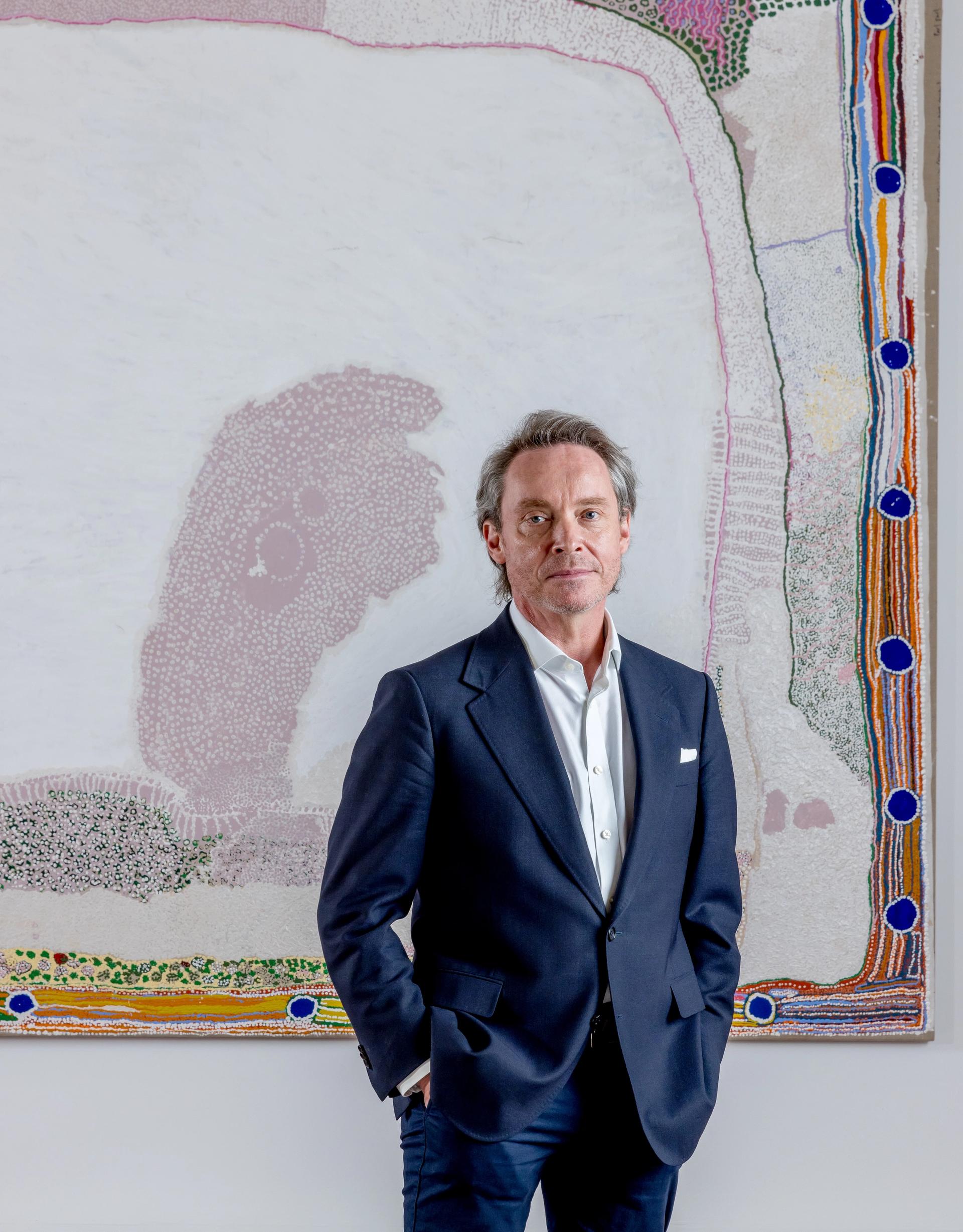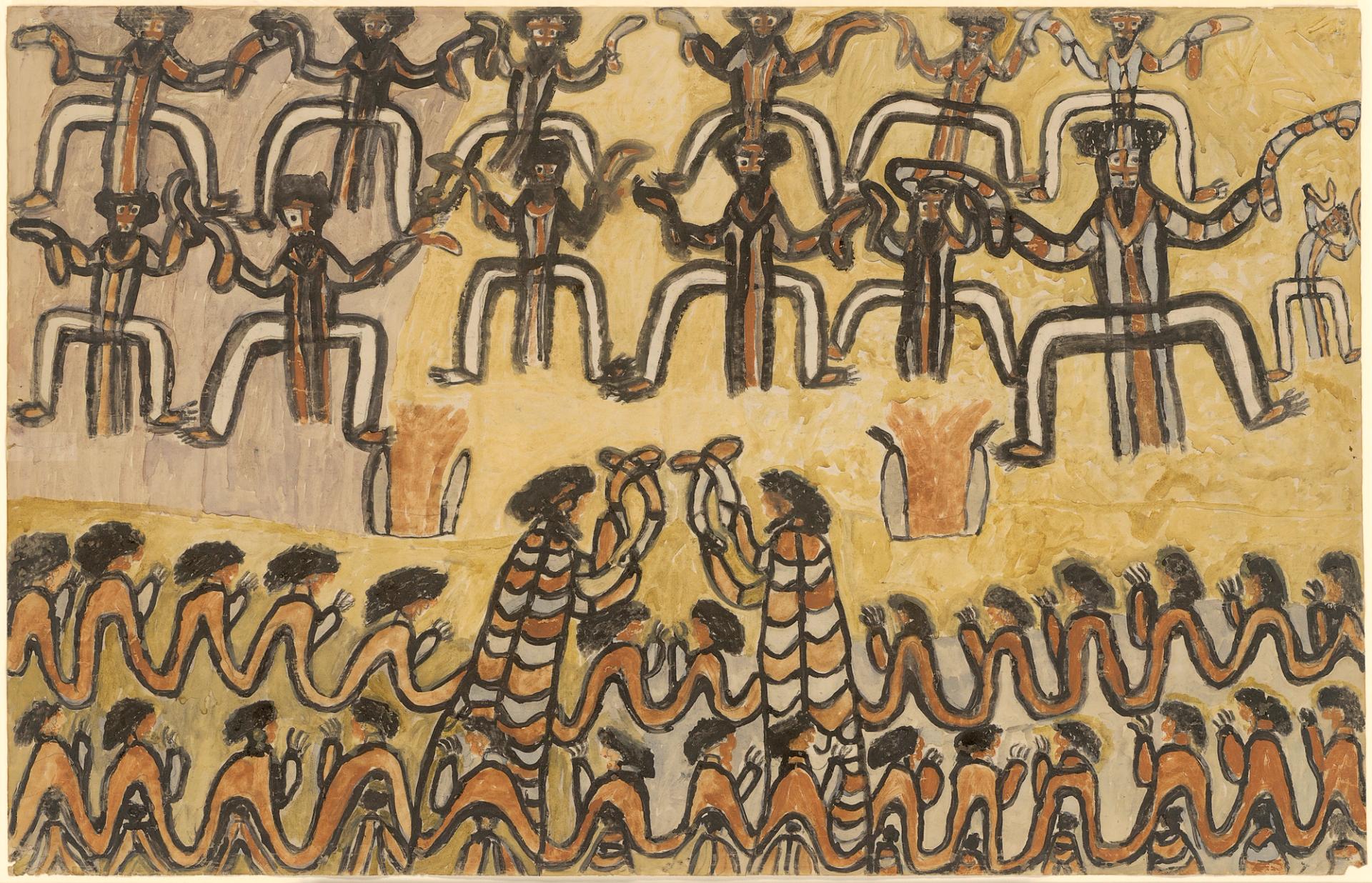When Australia was bitterly divided following the victorious “no” vote in last year’s referendum for an Indigenous Voice to Parliament, the director of the National Gallery of Victoria, Tony Ellwood, pressed ahead with plans to take the biggest-ever exhibition of Indigenous Australian art on international tour.
That exhibition, The Stars We Do Not See: Australian Indigenous Art, will open at the National Gallery of Art, Washington DC, on 18 October next year before touring venues across the US and Canada.
“Many of the works travelling are globally recognised as undisputed masterpieces,” Ellwood says.

Tony Ellwood the director of the National Gallery of Victoria Photo: Tim Carrafa
Highlights that have never before been seen in North America include the late desert painter Emily Kam Kngwarray’s largest painting, Anwerlarr anganenty (Big Yam Dreaming) (1995), measuring three by nine metres.
Mun-dirra (Maningrida Fish Fence) (2023), is another stand-out work. Measuring 100 metres long, it is a fibre work woven by women from Central West Arnhem Land.
Did the failure of the Voice referendum, which caused aggrieved Indigenous leaders to declare a “week of silence”, put a dampener on the exhibition project?
“No, it didn’t,” Ellwood says. “I mean, I think this community of (Indigenous) artists in our country transcend all of that. We have such a phenomenally successful and rich group of artists, both rural and urban. We’ve been passionate about getting them shown more fully around the globe for years.”
Ellwood said the major hurdle has been finding venues to commit to an exhibition whose subject is unfamiliar to many audience members.
“The cost of getting these works to the other side of the world is also a big issue. So that’s transcended any of the local issues that may have arisen, like the vote,” Ellwood says.
All the Stars We Do Not See will be drawn from the NGV’s 4,700-strong collection of works from mainland Australia and the Torres Strait. More than 130 artists are represented.
Contemporary Indigenous practitioners include Brook Andrew, Richard Bell, Reko Rennie, Maree Clarke and Lorraine Connelly-Northey. Famed Kimberley artists from Western Australia include Queenie McKenzie and Rover Thomas.
Another featured artist is Gulumbu Yunupingu, the first Yolngu woman to gain international acclaim for her bark paintings.
A major Central Desert work to be displayed is Spirit Dreaming through Napperby Country (1980) by Tim Leura Tjapaltjarri and Clifford Possum Tjapaltjarri. The work chronicles the dispossession of the Anmatyerre people when their lands were taken over to become vast cattle stations.
The vibrant paintings of Mirdidingkingathi Juwarnda Sally Gabori, who was celebrated with a major survey exhibition at the Fondation Cartier in Paris in 2022, will also be seen in the exhibition. And there will be works by artists from the early settler days of the late 19th century, such as William Barak and Tommy McRae.

William Barak, Ceremony (1898)
After closing in Washington, The Stars We Do Not See will tour to the Denver Art Museum in Colorado, the Portland Art Museum in Oregon, the Peabody Essex Museum in Massachusetts and the Royal Ontario Museum in Canada.
Ellwood says the exhibition had grown out of his friendship with the director of the National Gallery of Art, Washington DC, Kaywin Feldman. In a direct exchange between the two museums, an exhibition will come to Australia from Washington in due course. Details are yet to be finalised, Ellwood says.


